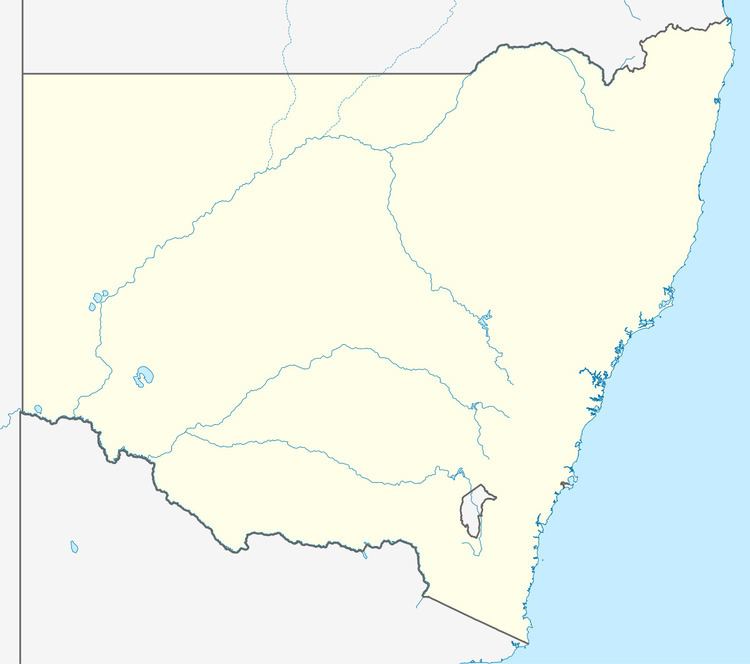Population 976 (2006 census) State electorate(s) Oxley Postal code 2449 | Postcode(s) 2449 Elevation 25 m Local time Friday 11:41 PM | |
 | ||
Weather 23°C, Wind SW at 6 km/h, 88% Humidity | ||
Bowraville is a small town in the Mid North Coast hinterland of New South Wales, Australia in Nambucca Shire.
Contents
- Map of Bowraville NSW 2449 Australia
- History
- Timber Industry
- Agriculture
- Bowra Theatre
- Racecourse
- Local media
- Bowraville murders
- References
Map of Bowraville NSW 2449, Australia
The town invites some tourists with such things as a folk museum, a war museum, a historic theatre, and other historic features. It also invites new residents with its scenic beauty and idyllic lifestyle. The Bowraville Jockey Club holds regular race meetings, and this also invites visitors from neighbouring towns and afar.
On 5 November 2011 Bowraville was honoured as the Winner of the Cultural Heritage Award and came third overall in the Tidy Towns Awards by Keep Australia Beautiful - Tidy Towns. Website: http://www.kabnsw.org.au/programs/TidyTowns.aspx
History
The Indigenous Gumbaynggirr and Ngaku people have inhabited the area for thousands of years, and today almost 34% of the population are still of Aboriginal origin. The Gumbaynggirr lands cover an area of the Mid North Coast from the Nambucca River to as far north as the Clarence River (Grafton), west to Armidale and eastward to the Pacific coast. The area was mostly subtropical rainforest until the arrival of Europeans.
The word Bowra comes from the Gumbaynggirr place name, Bawrrung, which possibly means cabbage tree palm. Other definitions given have been 'bullrout fish', 'scrub turkey' or 'bald head'. Originally named Bowra, the ville was added to the name in the 1870s to avoid confusion with the Southern Highlands town of Bowral.
In March 1841 Clement Hodgkinson explored the upper reaches of the Nambucca and Bellinger Rivers. He was the first European to make contact with the local Aboriginal communities. The township grew up in the 1850s and 1860s.
The town was gazetted in 1870 and Bowraville Post Office opened on 1 August 1870., and became the main centre of the Nambucca Valley. Its early industries were mainly timber and dairy, and the town eventually came to inherit the Nambucca Shire Council chambers. From about the 1960s, however, Bowraville began to decline in popularity and wealth.
Timber Industry
White settlement began in the area with the timber-getters. The first timber-getter into the area was Mr William Scott (after whom Scotts Head is named). The most popular timber was by far red cedar, of which there are now few trees left. Hoop pine was also popular. Like many Australian timber towns of this era, the town thrived for several decades, and by the 1870s boasted two hotels, several general stores, a blacksmith's, tailor, post office, a school and a number of churches.
Agriculture
By the 1880s the district was also an important dairy and pig raising area. Timber began to decline as the dominant industry by the early 20th Century, as the supply became rarer.
Many jobs have been lost in recent years with the decline of the timber industry however agriculture has diversified from the traditional core of dairy farming to include beef cattle. The area has also seen the development of such activities as macadamia farms, avocado growers, agro forestry, bush foods, alpacas and organic vegetables.
The town remained relatively static throughout the 20th Century but by the 1980s this area of the New South Wales coast was attracting people looking for a better lifestyle. Today this is apparent in venues like the beautifully restored historical theatre in the main street.
Bowra Theatre
The Bowraville Theatre has become a popular tourist attraction on the Mid North Coast hinterland. Built in 1940 as a picture theatre, it was derelict for many years but now operates as a performance space for the local theatre group, writers group, choir, and in its traditional role as a cinema.
The local community brought the theatre back to life, through volunteer work and fund raising. The restored foyer was opened at the end of 2002 and on Friday 29 August 2003, the Bowraville Theatre re-opened its doors. The indigenous community held a smoking ceremony and performed a welcome dance.
Like many businesses in country towns at the time of its construction, the theatre operated as a racially divided business. Aborigines had to buy their tickets separately, enter the theatre by a separate side entrance, sit in inferior seating below an interior partition and were permitted to do so only after the program had begun. As a result, the theatre was a stop-off on the 1965 Freedom Ride which saw students from Sydney University tour regional NSW to highlight racism against Aboriginal people.
Racecourse
Bowraville boasts a popular horse racing track that sees an ever-increasing interest from the local area as well as from further afield. The race meetings attract large registered betting interest and many who just come for the spectacle of events such as the Bowra Cup.
Local media
Radio Stations 2CS-FM (106.3), Star FM (105.5 & 105.1), 2MC-FM (106.7), Triple J (91.5 & 96.3), 2NVR FM (105.9)
The Nambucca Valley's community radio station, 2NVR 105.9FM, focuses on the Macksville, Bowraville, Nambucca Heads and surrounding communities.
Newspapers
Television ABC, ABC2, SBS, SBS NEWS, PRIME COFFS HARBOUR (SEVEN), SOUTHERN CROSS TEN (TEN), NBN (WIN, NINE)
Bowraville murders
Between 1990 and 1991, three children were murdered in Bowraville. Despite two trials and much publicity, there have been no convictions for the murders.
On 26 May 2016, after the tireless efforts of the families over many years, and two refusals from NSW Attorneys General, the current Attorney General announced that the NSW Court of Criminal Appeal would hear the case. Publicity generated by a popular podcast from The Australian possibly helped finally create enough public pressure to force the Attorney General in this decision.
